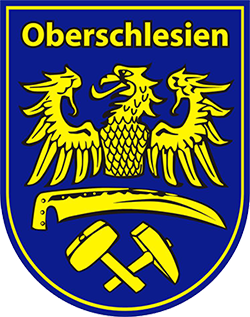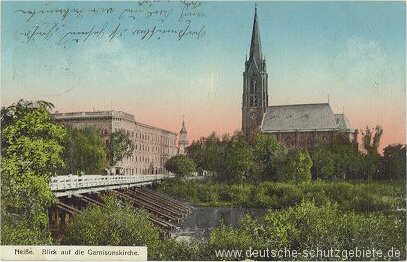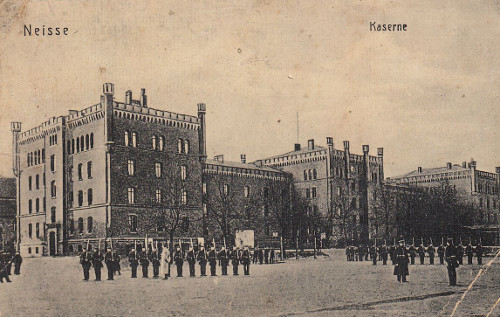|
|
 Regional Cultural Heritage Regional Cultural Heritage
The Germans are really not a homogenous people. In fact, the various tribes which make up "the Germans" were so fiercely independent that they did not unite until the relatively late date of the late 19th Century. For the reenactor, a general knowledge of the regional culture of his "historical" home is more important than detailed knowledge of minutia. A soldier from Berlin, for example, would not have noticed and cared less about the difference between an M16 and M18 helmet. On the other hand, he would certainly have known what the Brandenburg Gate looked like, what Jüterbog was famous for, or what Weisse mit Schuss tastes like.
A Regional Basis
The German Army was raised on a regional basis, which means that the units were usually recruited from specific areas of Germany. The following information details some of the regional stereotypes (which, like all stereotypes, are only half-truths) and just a sample of the local institutions; the reenactor should do some more research on his own:
Silesia (“Schlesien” in German) was an area that stretched along the 220 mile long Oder River valley and had been part of Prussia since the 1740s. It was divided into two sections: the northwestern part, known as Lower Silesia (Niederschlesien), and the southeastern part, known as Oberschlesien (Upper Silesia). The latter area was the home of J.R. 23.
This unit was number 23 in the Prussian line, but was also part of (and referred to as) the „2. Oberschlesisches“ (2nd Upper Silesian). The 2. Oberschlesisches consisted of J.R. 23 and J.R. 62. On the eve of the war, J.R. 23 and J.R. 62 constituted the 24th Brigade. This brigade, along with J.R. 23, J.R. 157, Jäger zu Pferde (mounted rifles) Regt. Nr. 11, Feldartillerieregiment Nr. 21, and Feldartillerie-Regiment Nr. 57, made up the 12th Division. The 12. Division was based in Neiße.
The 12th and 11th Divisions formed the 6th Army Corps, which in peacetime was based at Breslau (now called Wroclaw), the largest city in the province. Though actually in Lower Silesia, Breslau was roughly in the middle of Silesia, thereby providing a centralized location from which to administer the two divisions. In August 1914, the 6th Army Corps was an element of the 5th Army under the command of Krönprinz Friedrich Wilhelm.
 J.R. 23’s home station was in the city of Neiße in Oberschlesien (now called Nysa, part of southwestern Poland). This area was a great mining and industrial center: the mines produced much of Germany’s coal, zinc, and lead, and large steelworks operated in many cities, including Lublinitz. The factory towns of Niederschlesien, particularly Breslau, turned out trucks, motors, leather items, and metalwork. Silesia’s farms grew much more produce—barley, rye, wheat, oats, vegetables, fruit, and potatoes, even tobacco—than the province’s residents needed. Goods from the area were transported to other markets on the well-developed German railway network and the Oder River, which ran the length of the province. In addition to fields and orchards, a large percentage of the land—at least 25%—was still heavy forest—a good place to hunt and a source of timber. J.R. 23’s home station was in the city of Neiße in Oberschlesien (now called Nysa, part of southwestern Poland). This area was a great mining and industrial center: the mines produced much of Germany’s coal, zinc, and lead, and large steelworks operated in many cities, including Lublinitz. The factory towns of Niederschlesien, particularly Breslau, turned out trucks, motors, leather items, and metalwork. Silesia’s farms grew much more produce—barley, rye, wheat, oats, vegetables, fruit, and potatoes, even tobacco—than the province’s residents needed. Goods from the area were transported to other markets on the well-developed German railway network and the Oder River, which ran the length of the province. In addition to fields and orchards, a large percentage of the land—at least 25%—was still heavy forest—a good place to hunt and a source of timber.
 Although Silesia was a province of the state of Prussia (hence the Prussian colors—black, white, black—on the state cockades of J.R. 23’s caps and spiked helmets), the people of the area had a distinctive character that set them apart from other Prussians. Many were of Polish or mixed Polish-German descent. Large parts of the population were Roman Catholic or Jewish, which differed from the predominantly Protestant population in other parts of Prussia. Princess Evelyn, the English wife of Prince Blucher, spent time both in Berlin and on the Blucher estate in Silesia during the war. In her memoirs, An English Wife in Berlin, she compared the common citizens of Prussia proper and Silesia. She said she preferred the Silesians, characterizing them as a self-reliant, good-natured people, and as being more friendly than the Berliners. Even in the times of great adversity that came during the war, she reported that the average Silesian was willing to share what little he had with his neighbors. Despite the fact that almost every household had lost family members in combat by 1917, the people generally remained steadfast in their sense of duty, and were as cheerful as possible under the circumstances. Although Silesia was a province of the state of Prussia (hence the Prussian colors—black, white, black—on the state cockades of J.R. 23’s caps and spiked helmets), the people of the area had a distinctive character that set them apart from other Prussians. Many were of Polish or mixed Polish-German descent. Large parts of the population were Roman Catholic or Jewish, which differed from the predominantly Protestant population in other parts of Prussia. Princess Evelyn, the English wife of Prince Blucher, spent time both in Berlin and on the Blucher estate in Silesia during the war. In her memoirs, An English Wife in Berlin, she compared the common citizens of Prussia proper and Silesia. She said she preferred the Silesians, characterizing them as a self-reliant, good-natured people, and as being more friendly than the Berliners. Even in the times of great adversity that came during the war, she reported that the average Silesian was willing to share what little he had with his neighbors. Despite the fact that almost every household had lost family members in combat by 1917, the people generally remained steadfast in their sense of duty, and were as cheerful as possible under the circumstances.
Viewpoint
Rick Baumgartner, a former member of J.R. 23, met and talked with a man who provided another viewpont on the Silesians. He located and interviewed a German veteran from a Bavarian artillery regiment that had been stationed next to J.R. 23 at one point during the war. He said that they all liked the Silesians, whom he described as big, friendly, good-natured miners and farmers. But he felt sorry for them, as they were so easy-going and good-natured that the Bavarian artillerymen were able to play some truly awful practical jokes on them.
Famous Schlesiers
There are many famous people who were born in Silesia:
-
Writers, poets and playwrights like Andreas Gryphius, Martin Opitz, Fürst von Pückler-Muskau, Carl Hauptmann, Gerhart Hauptmann (Nobel Prize in Literature, 1912), Joseph Freiherr von Eichendorff, Gustav Freytag
-
Military officers such as Manfred von Richthofen, Erwin von Witzleben,
-
-
Painters like Adolph von Menzel
-
Philosophers like Jakob Böhme
-
Actors like Dieter Hildebrandt, Victor de Kowa, Ludwig M. Lommel, Wolfgang Neuss, Willy Fritsch, Hanna Schygulla, Georg Thomalla
-
Politicians like Paul Löbe (SPD), Klaus Töpfer (CDU), Manfred Kanther (CDU), Ferdinand Lassalle, Erich Mende (FDP)
-
Scientists like Hans G. Dehmelt (Nobel Prize in Physics, 1989), Paul Ehrlich (Nobel Prize in Medicine, 1908), Friedrich Bergius (Nobel Prize in Chemistry, 1931), Max Born (Nobel Prize in Physics, 1954), Fritz Haber (Nobel Prize in Chemistry, 1918), Reinhard Selten (Nobel Memorial Prize in Economic Sciences, 1994), Konrad Bloch (Nobel Prize in Medicine, 1964), Bernhard Grzimek, Johannes Winkler, Maria Goeppert-Mayer (Nobel Prize in Physics, 1963), Kurt Alder (Nobel Prize in Chemistry, 1950), Otto Stern (Nobel Prize in Physics, 1943)
-
Builder and architects like Carl Gotthard Langhans
-
Musicians like Katja Ebstein, Roy Etzel, Michael Jary
|




 Regional Cultural Heritage
Regional Cultural Heritage J.R. 23’s home station was in the city of Neiße in Oberschlesien (now called Nysa, part of southwestern Poland). This area was a great mining and industrial center: the mines produced much of Germany’s coal, zinc, and lead, and large steelworks operated in many cities, including Lublinitz. The factory towns of Niederschlesien, particularly Breslau, turned out trucks, motors, leather items, and metalwork. Silesia’s farms grew much more produce—barley, rye, wheat, oats, vegetables, fruit, and potatoes, even tobacco—than the province’s residents needed. Goods from the area were transported to other markets on the well-developed German railway network and the Oder River, which ran the length of the province. In addition to fields and orchards, a large percentage of the land—at least 25%—was still heavy forest—a good place to hunt and a source of timber.
J.R. 23’s home station was in the city of Neiße in Oberschlesien (now called Nysa, part of southwestern Poland). This area was a great mining and industrial center: the mines produced much of Germany’s coal, zinc, and lead, and large steelworks operated in many cities, including Lublinitz. The factory towns of Niederschlesien, particularly Breslau, turned out trucks, motors, leather items, and metalwork. Silesia’s farms grew much more produce—barley, rye, wheat, oats, vegetables, fruit, and potatoes, even tobacco—than the province’s residents needed. Goods from the area were transported to other markets on the well-developed German railway network and the Oder River, which ran the length of the province. In addition to fields and orchards, a large percentage of the land—at least 25%—was still heavy forest—a good place to hunt and a source of timber.  Although Silesia was a province of the state of Prussia (hence the Prussian colors—black, white, black—on the state cockades of J.R. 23’s caps and spiked helmets), the people of the area had a distinctive character that set them apart from other Prussians. Many were of Polish or mixed Polish-German descent. Large parts of the population were Roman Catholic or Jewish, which differed from the predominantly Protestant population in other parts of Prussia. Princess Evelyn, the English wife of Prince Blucher, spent time both in Berlin and on the Blucher estate in Silesia during the war. In her memoirs, An English Wife in Berlin, she compared the common citizens of Prussia proper and Silesia. She said she preferred the Silesians, characterizing them as a self-reliant, good-natured people, and as being more friendly than the Berliners. Even in the times of great adversity that came during the war, she reported that the average Silesian was willing to share what little he had with his neighbors. Despite the fact that almost every household had lost family members in combat by 1917, the people generally remained steadfast in their sense of duty, and were as cheerful as possible under the circumstances.
Although Silesia was a province of the state of Prussia (hence the Prussian colors—black, white, black—on the state cockades of J.R. 23’s caps and spiked helmets), the people of the area had a distinctive character that set them apart from other Prussians. Many were of Polish or mixed Polish-German descent. Large parts of the population were Roman Catholic or Jewish, which differed from the predominantly Protestant population in other parts of Prussia. Princess Evelyn, the English wife of Prince Blucher, spent time both in Berlin and on the Blucher estate in Silesia during the war. In her memoirs, An English Wife in Berlin, she compared the common citizens of Prussia proper and Silesia. She said she preferred the Silesians, characterizing them as a self-reliant, good-natured people, and as being more friendly than the Berliners. Even in the times of great adversity that came during the war, she reported that the average Silesian was willing to share what little he had with his neighbors. Despite the fact that almost every household had lost family members in combat by 1917, the people generally remained steadfast in their sense of duty, and were as cheerful as possible under the circumstances.